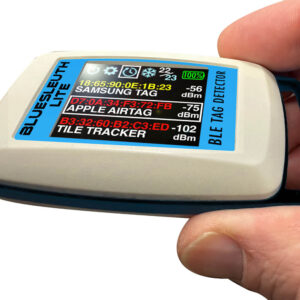Your cart is currently empty!
Terrorists Hack Drones
Terrorists hacking drones is a new wave of enemies. We forget that terrorists hack drones to further their goals.

Hacking Over the Internet, Wirelessly, and From the Air
Terrorists hack drones. They use drones to hack computer networks.They are hacking drones to acquire the drone itself. This is not something new. Hacking happens many ways. Some hackers break into computer networks remotely. Shutting down critical infrastructure. This was proven with the Stuxnet hacking of Iran’s nuclear reactor. Then the U.S. and Israel teamed up in order to stall Iran’s nuclear program.
Stuxnet was likely introduced via an infected USB flash drive. But wireless threats typically go unrealized. Due to awareness with wired networks rather than wireless counterparts. With the rise of smart phones, Bluetooth, NFC, and Wi-Fi hotspots hackers have many entry points.
Terrorists Hack Drones
Hackers hack drones to use a hybrid sky approach. Using drones to hack with their eye on critical targets. The terrorist has hacked the drone. Read here for more onThe Wireless Threat
First the Good News
Drones have delivered everything from packages to pizza. Where there is pizza, there is also beer. Drones are being used by farmers to check their irrigation systems. They track crops that appear sick. The real estate market has used drones for the aerial photography of homes. Wealthy buyers can get a ‘birds eye view’. Fast paced outdoor sports such as skiing, car racing and football offer amazing aerial views. Firefighters embrace drones as an effective tool for scouting blazes to save fuel costs. With all the advances in drone technology what could possibly go wrong?
Now For the Bad News
On Jan. 27, 2015, a civilian drone breached restricted airspace, crashing on the White House lawn. This caused reasonable panic. As security officials had no way of knowing where it came from or if it was a credible threat. The operator turned himself into authorities the next morning. It ended up being a harmless accident. The White House and Secret Service were briefly on full alert. The costs associated with national security are unsurprisingly high, but what about the worst-case scenarios? What about a terrorist drone dispensing a biological agent or strapped with C4?
Modern drones are incredible and can be auto-piloted using pre-programmed waypoints. These are vulnerabilities present within all navigation systems. That would allow a cyber hacker access to the drone’s data stream or telemetry link connection. Or they could even spoof the connection to the pilot’s ground station, allowing complete control of the interface. Either scenario is cause for concern and a credible threat. Drones can be dangerous when carelessly piloted by anyone. But even more deadly by terrorists using a little skill.

In June of 2015, I testified alongside members of the AMA (Academy of Model Aeronautics) before the Assembly Homeland Security and State Preparedness Committee of New Jersey State Legislature in Trenton. On credible threats that drones pose to critical infrastructure. The committee was preparing to vote on proposed legislature, “Establishes fourth degree crime of conducting surveillance of critical infrastructures using drones and requires certain drones to be registered and insured.”
I shared my wireless expertise. And posed a credible terrorist scenario involving multiple drones equipped with explosives. Being flown below radar near a nuclear facility. There are multiple critical infrastructure weak points in any nuclear facility. I highlighted several easily targeted with drones. Which could lead to full meltdown if not secured immediately.
What do we do? Terrorists hack drones. Can our government and private firms put security measures into action so we can retain our privacy?
Future of Drones Good and Bad
Of course, we don’t need a doomsday scenario in order to legislate, educate and regulate the public on drones. As I’ve detailed in past blogs on drone hacking, terrorists and hackers modify drones with special software. That can search for a nearby Wi-Fi client looking for a Wi-Fi network to join. This drone would then intercept the transmitted signal. Fooling the mobile phone into believing it is a trusted wireless network. Once connected to a “trusted” network the hacker has access. And could intercept your mobile phone’s private data, passwords, and contacts.
These man-in-the-middle attacks started when computers were first networked. Drones give hackers the ability to perform these attacks wirelessly and on-the-go. Following victims anywhere in the world. There is a lack of stringent security measures built into drones.
Consumer drone makers are not addressing the operating systems. Until they do drones, pilots, and targets remain vulnerable. Hopefully the IoT industry and others industries that do not prioritize security will soon realize their need.

Scott Schober
CEO | Author | Speaker at Berkeley Varitronics Systems
Scott Schober presents at cybersecurity and wireless security conferences for banking, insurance, transportation, construction, telecommunications and law enforcement industries. He has overseen the development of dozens of wireless test, security, safety and cybersecurity products used to enforce a “no cell phone policy” in correctional, law enforcement, and secured government facilities. Scott regularly appears on network news programs including Fox, Bloomberg, Good Morning America, CNN, MSNBC, NPR and many more. He is the author of 'Senior Cyber', 'Cybersecurity is Everybody's Business' and 'Hacked Again', the “original hacker’s dictionary for small business owners” - Forbes Magazine.
Our Newsletter
Lorem ipsum dolor sit amet, consectetur adipiscing elit. Aliquam mattis ligula vitae leo scelerisque, sit amet feugiat ex venenatis.
"*" indicates required fields
Latest Posts
Our Best Sellers
How can we help?
Lorem ipsum dolor sit amet, consectetur adipiscing elit. Nunc dictum aliquet justo sit amet consectetur. In tempor lobortis ante vitae ornare. Praesent feugiat magna at tempor consequat. Aenean in iaculis libero, aliquam imperdiet mi.









Leave a Reply